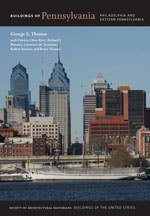
In the early twentieth century, with Victorian styles under attack, in a survey of college campus architecture for The Architectural Record between 1911 and 1915, critic C. Matlack Price noted grimly that “the buildings of Lehigh are, for the most part, survivals of the prevailing architectural aberration of the eighties, offering no basis as precedent for any additions.” The bright side, of course, was that twentieth-century architects had a free hand. The first to stake out the new course was the new administration building, a memorial to the 46 Lehigh students and alumni who died in World War I (and the more than 1,700 who served). The university's alumni association paid for the building and chose its architects, Theodore Visscher and James Burley, who—not surprisingly—were both graduates of Lehigh. Together they created a symmetrical Collegiate Gothic fieldstone composition, in which a long two-story (plus attic floor) building is flanked by gabled rectangular end pavilions turned at right angles. From the center rises a lofty square tower, beneath which is a three-story entrance hall. Price praised the building as “a modern rendering of a transplanted historic style,” and its details for their “very interesting absence of anything like a hard, mechanical feeling.” Its square-topped tower joins the heavier Victorian Gothic pointed towers of Packer Hall ( NO41.1) and Packer Chapel ( NO41.5) to create the animated array of towers that establishes Lehigh's distinctive skyline. To this extent, Price was wrong about the merit of Lehigh's Victorian legacy.

